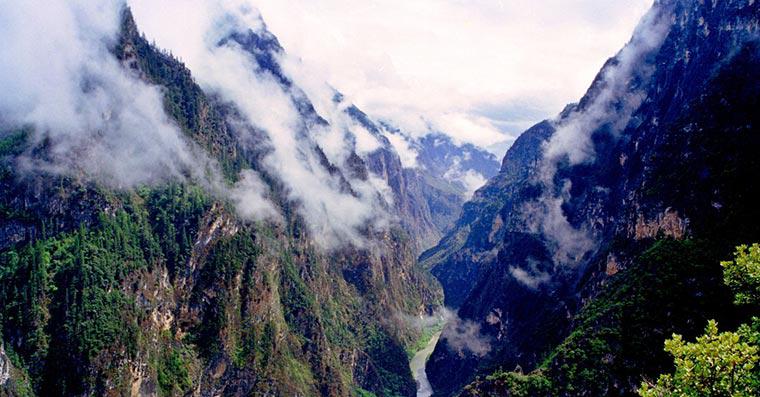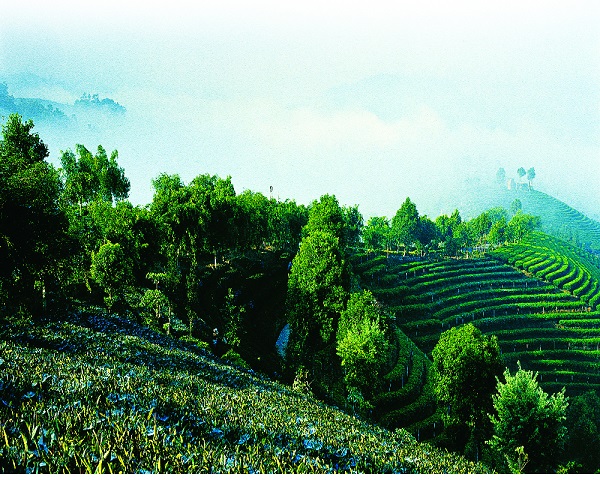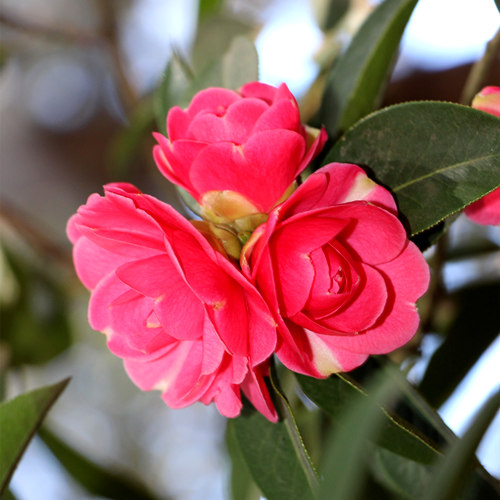
Detailed Introduction to Lanping County of Nujiang Prefecture
Lanping County (兰坪县), officially known as Lanping Bai and Pumi Autonomous County (兰坪白族普米族自治县), is one of the four county-level divisions under the administration of Nujiang Lisu Autonomous Prefecture in northwestern Yunnan Province, China. It lies at the confluence of the Nujiang (Salween) and Lancang (Mekong) river systems, making it a region of dramatic topography and rich ethnic diversity.
Geographical Overview
Lanping County is located in the northeastern part of Nujiang Prefecture, bordering Lijiang City to the east, Weixi County to the southeast, and Fugong County to the west. The county spans an area of approximately 4,400 square kilometers, with elevation ranging from 1,500 meters in river valleys to over 4,000 meters on mountain ridges. The region is characterized by its steep mountains, deep gorges, and intersecting river systems, which create a variety of microclimates and landscapes.
The climate in Lanping is classified as plateau subtropical monsoon climate, featuring mild temperatures year-round, distinct wet and dry seasons, and high sunshine duration. Average annual temperatures hover around 14°C–16°C, making it relatively temperate compared to the deep valleys of Nujiang.
History and Administration
Historically, Lanping was a border region between various ethnic groups and ancient kingdoms, including the Nanzhao and Dali Kingdoms. It was officially established as Lanping County in 1950, and in 1985 it became the Lanping Bai and Pumi Autonomous County, recognizing the significant populations of Bai and Pumi ethnic minorities.
Administratively, Lanping governs 5 towns and 3 townships, with Jinding Town (金顶镇) serving as the county seat. Jinding is also known for its rich mineral deposits, particularly lead and zinc, and is home to the well-known Lanping Jinding Mining Area—one of China’s largest lead-zinc mines.
Ethnic Composition and Culture
Lanping is a multi-ethnic county, with the Bai, Pumi, Lisu, and Han peoples forming the majority. The coexistence of these groups has created a unique cultural mosaic reflected in language, clothing, festivals, and traditions.
The Bai people, known for their elegant architecture and refined artistic traditions, have greatly influenced local culture, especially in the eastern part of the county.
The Pumi people, an ancient ethnic group with Tibetan roots, retain distinctive customs, music, and religious practices related to nature worship and Bon-like traditions.
The Lisu people, common throughout Nujiang, contribute lively music, colorful attire, and traditional rope-bridge building skills.
Festivals such as the Torch Festival (火把节), Pumi New Year (俄热节), and Lisu Kuoshi Festival (阔时节) are celebrated widely, reflecting the diversity and vitality of Lanping’s ethnic heritage.
Economy
Lanping’s economy is driven primarily by mineral resources, agriculture, and tourism. The Jinding lead-zinc deposit is a cornerstone of the local economy, contributing significantly to both the county and prefectural GDP.
Agriculture is practiced mainly in valley areas, with major products including corn, potatoes, walnuts, tea, and medicinal herbs. In recent years, Lanping has been promoting eco-agriculture and rural tourism as part of Yunnan’s green development strategy.
Tourism and Natural Attractions
Though less known than Dali or Lijiang, Lanping offers pristine natural beauty and authentic ethnic experiences. Major attractions include:
Laoying Mountain (老鹰山) – Known for its grand peaks, alpine meadows, and panoramic views of the Nujiang River valley.
Lanping Hot Springs (兰坪温泉) – Natural geothermal springs offering relaxation and therapeutic benefits.
Jinding Mine Scenic Area (金顶矿山景区) – Combines industrial tourism with geological education, showcasing the transformation from mining town to ecological restoration zone.
Pumi Ethnic Villages – Traditional wooden architecture, folk performances, and local handicrafts introduce visitors to the distinctive Pumi way of life.
The county’s unspoiled landscapes and multicultural atmosphere make it an emerging destination for eco-tourism, ethnic studies, and geological exploration.
Transportation and Connectivity
Lanping is connected by provincial highways to major cities like Dali, Lijiang, and Liuku, the prefectural capital. With the ongoing improvement of Yunnan’s transport network, travel times have been significantly reduced. The Lancang–Nujiang Highway and nearby Lijiang–Shangri-La Expressway facilitate access to neighboring tourism hubs.
Conclusion
Lanping Bai and Pumi Autonomous County stands as a hidde



